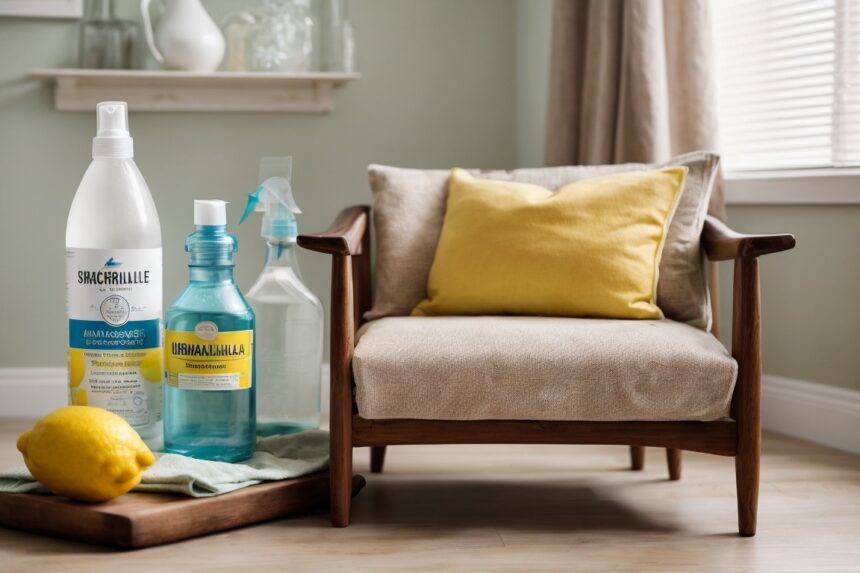Your armchair is more than just a piece of furniture; it’s a haven of comfort, a sanctuary for relaxation, and a witness to countless moments of joy and reflection. To ensure your beloved armchair remains a source of pleasure for years to come, proper care and maintenance are essential. This comprehensive guide provides you with all the knowledge and tools you need to keep your armchair looking and feeling its best.
Cleaning Your Armchair
1. General Cleaning:
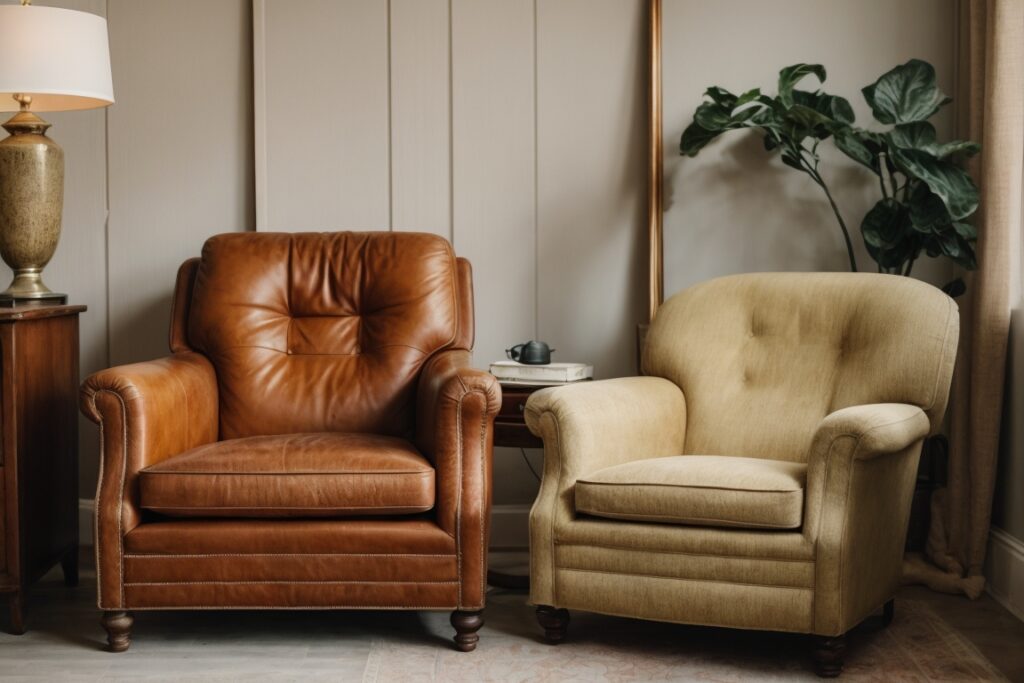
The foundation of armchair maintenance lies in regular cleaning. Dust, dirt, and allergens can accumulate on the upholstery and fabric, reducing its quality, comfort, and lifespan. To maintain a clean and healthy environment, aim to vacuum your armchair at least once a week, preferably twice, using the soft brush attachment. This will remove surface debris and prevent deep-seated dirt.
2. Upholstery Specifics:
Different upholstery materials require specific cleaning techniques. Ensure you choose the appropriate method to avoid causing damage or discoloration.
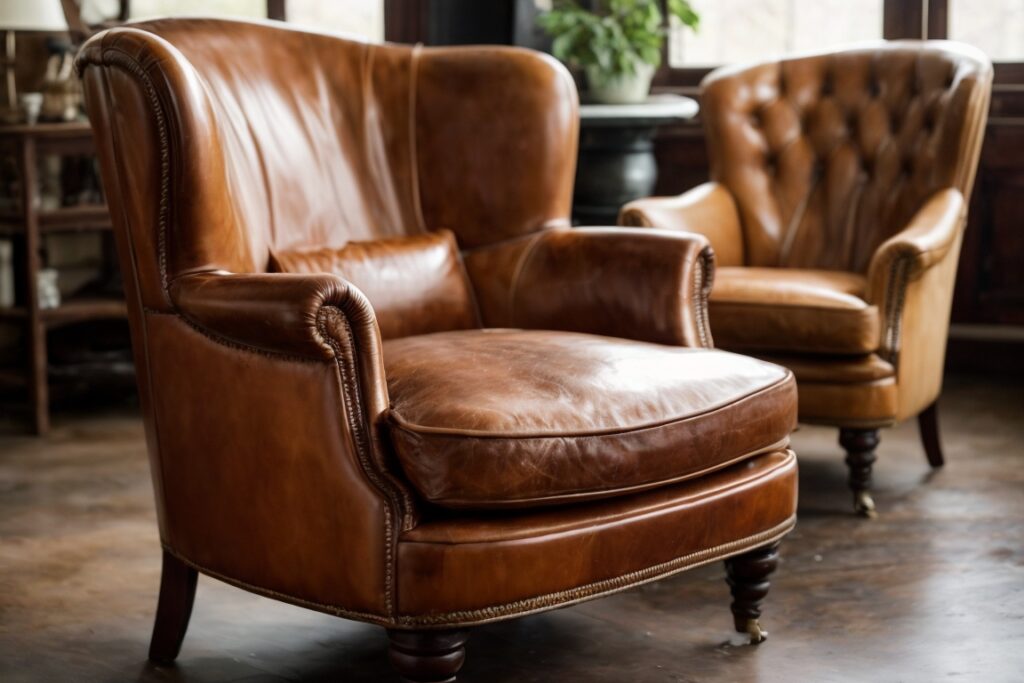
- Fabric Upholstery: For fabric upholstery, a mild solution of lukewarm water and a gentle fabric detergent is ideal. Apply the solution to a clean, damp cloth and gently wipe down the fabric. Avoid excessive scrubbing, as this can damage the fibers. Allow the fabric to dry completely before using the armchair again.
- Leather Upholstery: Leather requires a different approach. Use a commercially available leather cleaner specifically designed for your type of leather (e.g., aniline, semi-aniline, or protected). Apply the cleaner according to the manufacturer’s instructions and buff it with a soft, dry cloth. Avoid using harsh chemicals, abrasive cleaners, or excessive water, as these can damage the leather.
- Spot Cleaning: Accidents happen, and spills are inevitable. For immediate action, blot up excess liquid with a clean, absorbent cloth. Do not massage the discoloration, since this will spread it. Depending on the nature of the spill, you may need to use a specific spot-cleaning solution. Always test any cleaning solution on an inconspicuous area of the upholstery first to ensure it does not cause damage.
- Deep Cleaning: For thorough cleaning, especially if your armchair has seen significant use or suffered spills, deep cleaning may be necessary. This can involve steam cleaning for fabric upholstery or professional cleaning for leather upholstery. Consult your furniture manufacturer or a professional cleaning service for recommendations and best practices.
Cleaning Methods by Upholstery Material
| Material | Regular Cleaning | Spot Cleaning | Deep Cleaning |
|---|---|---|---|
| Fabric | Mild detergent solution and damp cloth | Specific stain cleaner | Professional steam cleaning |
| Leather | Leather cleaner and soft dry cloth | Specific leather stain cleaner | Professional leather cleaning |
Additional Tips:
- Invest in a fabric protector spray to repel spills and stains.
- Regularly remove and wash removable cushions and covers.
- Place your armchair away from direct sunlight to prevent fading.
- Avoid placing heavy objects on the armrests or cushions.
By following these general and specific cleaning guidelines, you can keep your armchair looking fresh and inviting for years to come. Remember, regular cleaning is key to maintaining a clean and healthy environment for you and your loved ones.
In the next, we will explore ways to protect your armchair and extend its lifespan even further.
Protecting Your Armchair
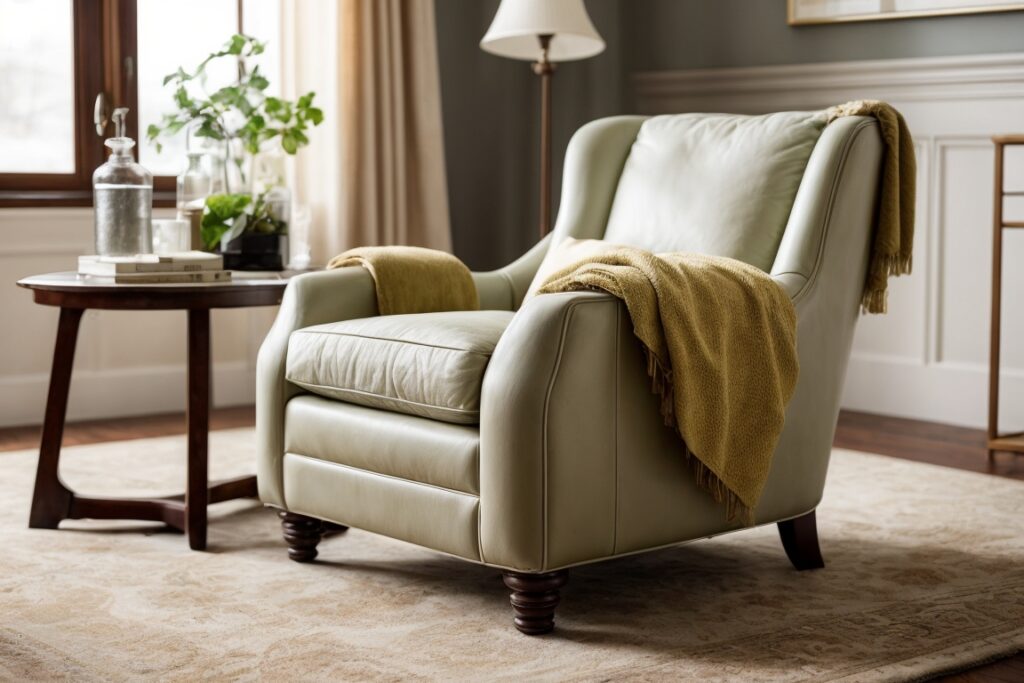
While regular cleaning is essential, taking proactive measures to protect your armchair further enhances its longevity and preserves its beauty. Here are some effective ways to keep safe your favorite seat:
Preventative Measures:
- Sunlight Exposure: Direct sunlight can cause fading, cracking, and drying out of various upholstery materials. Position your armchair strategically to minimize exposure, or consider using curtains or blinds for additional protection.
- Coasters and Protective Pads: Place coasters under drinks and use protective pads under heavy objects to prevent scratches, stains, and indentations on the surface.
- Harsh Chemicals and Abrasives: Avoid using harsh chemicals, abrasive cleaners, or scouring pads on your armchair, as these can damage the fabric or leather. Opt for gentle cleaning solutions and soft cloths.
- Weight Distribution: Avoid concentrating weight on specific areas, as this can cause uneven wear and tear. Distribute weight evenly across the cushions and seat base.
- Pets and Children: If you have pets or young children, consider using protective throws or covers to shield your armchair from accidental damage.
Regular Maintenance Checks:
Taking a few minutes to regularly check your armchair for signs of wear and tear can prevent small issues from escalating into bigger problems. Here are some essential points to inspect:
- Loose Screws and Bolts: Over time, screws and bolts can loosen, causing wobbly or unstable furniture. Regularly tighten any loose hardware to maintain structural integrity.
- Structural Damage: Check for any cracks, tears, or other damage to the frame, cushions, or upholstery. Resolve any issues as quickly as you can to prevent them from getting worse later.
- Moving Parts: If your armchair has any moving parts, such as a recliner mechanism or swivel base, lubricate them periodically according to the manufacturer’s instructions to ensure smooth operation and prevent wear and tear.
Preventive Measures and Maintenance Checks
| Action | Frequency | Benefits |
|---|---|---|
| Minimize sunlight exposure | Ongoing | Prevents fading, cracking, and drying |
| Use coasters and protective pads | As needed | Protects from scratches, stains, and indentations |
| Avoid harsh chemicals and abrasives | Ongoing | Preserves fabric and leather integrity |
| Distribute weight evenly | Ongoing | Prevents uneven wear and tear |
| Check for loose screws and bolts | Monthly | Maintains structural integrity |
| Inspect for structural damage | Monthly | Identifies and addresses problems early |
| Lubricate moving parts | Recommended by manufacturer | Ensures smooth operation and prevents wear |
These simple yet effective preventative measures and maintenance checks can significantly extend the life of your armchair and ensure it remains a comfortable and functional piece of furniture for years to come.
In the next section, we’ll delve into ways to rejuvenate your armchair and restore its former glory.
Extending the Life of Your Armchair
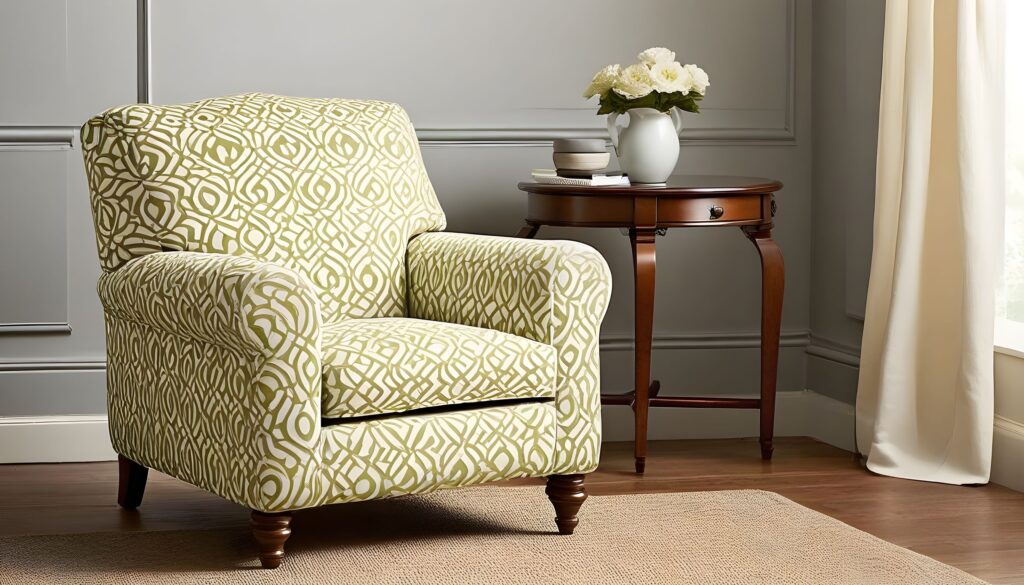
While proper cleaning and protection are crucial, sometimes an armchair needs a little extra TLC to regain its original shine. Here are some ways to restore and revitalize your beloved seat:
Reupholstering: If your armchair’s upholstery is faded, stained, or worn beyond repair, reupholstering offers a chance for a complete makeover. This process involves removing the old fabric and replacing it with new material. You can choose from a wide variety of fabrics, colors, and patterns to create a unique look that complements your decor.
Refinishing: For wood armchairs, refinishing can restore their natural beauty and elegance. This process involves removing the old finish, sanding the wood smooth, and applying a new finish. You can choose a traditional finish like stain and varnish or a contemporary look with paint.
Cushion Replacement: If your armchair’s cushions are saggy or uncomfortable, replacing them with new ones can dramatically improve its comfort and support. You can choose from various types of foam and fillings to achieve the desired level of firmness and support.
Restoration Options for Armchair Revitalization
| Option | Description | Benefits |
|---|---|---|
| Reupholstering | Replacing old fabric with new | Updates appearance, repairs damage, improves comfort |
| Refinishing (wood armchairs) | Removing old finish and applying new | Restores natural beauty, protects wood, updates look |
| Cushion Replacement | Replacing worn-out cushions with new | Improves comfort and support, extends lifespan |
Additional Tips for Extending Life:
- Cushions should be rotated often to guarantee equal aging.
- Regular fluffing will help cushions retain their support and form.
- Avoid sitting on the armrests to prevent damage.
- Store your armchair properly in a cool, dry place when not in use.
- Consider investing in a slipcover to protect your armchair from everyday wear and tear.
By implementing these restoration options and additional tips, you can breathe new life into your beloved armchair and enjoy its comfort and beauty for years to come. Remember, investing in proper care and maintenance is the key to ensuring your armchair’s longevity and preserving its value as a cherished piece of furniture.
DIY Cleaning Solutions and Tricks
While commercially available cleaning products work wonders, sometimes natural, DIY solutions can be just as effective and even more budget-friendly. Here are some tried-and-tested DIY cleaning solutions and tricks for different types of armchair upholstery:
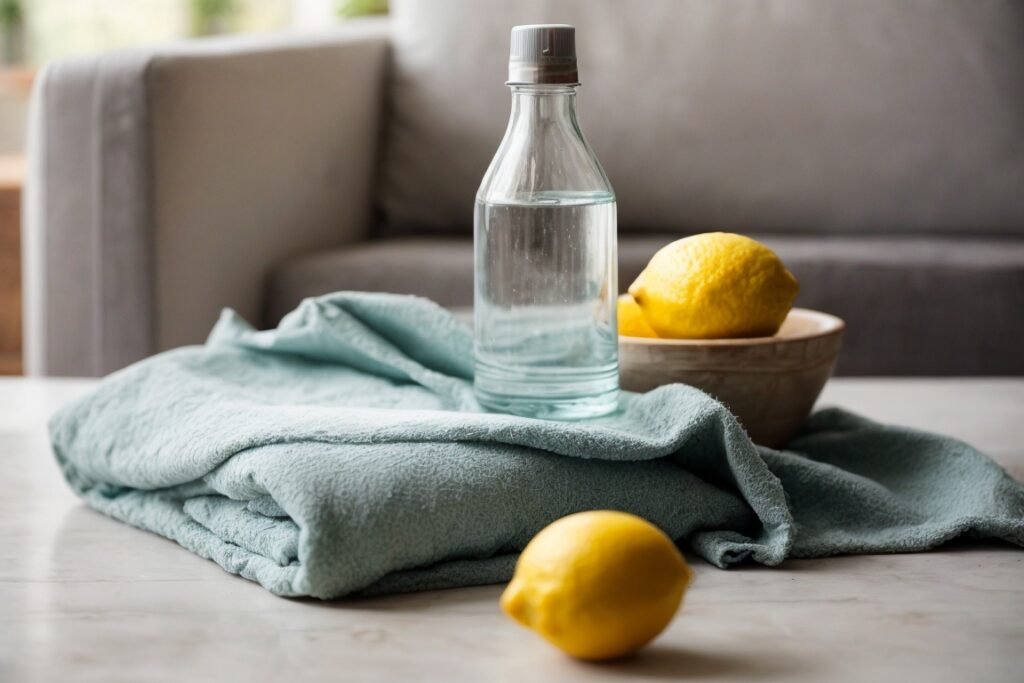
Fabric Upholstery:
- White vinegar solution: In a spray bottle, combine equal amounts of white vinegar and water. Spray the solution on a clean cloth and gently wipe down the fabric. This is an excellent all-purpose cleaner that removes dirt, grime, and mild stains.
- Baking soda: Sprinkle baking soda on the fabric and let it sit for 30 minutes. This absorbs odors and helps remove stubborn stains. Vacuum up the baking soda afterward.
- Lemon juice: For greasy stains, apply a small amount of fresh lemon juice directly to the stain. After using a fresh cloth to blot, rinse with water.
Leather Upholstery:
- Olive oil: Apply a small amount of olive oil to a soft, dry cloth and buff the leather. This helps condition the leather and restore its natural shine. Avoid using excess oil, as it can attract dust and dirt.
- Saddle soap: For deep cleaning, use a mild saddle soap and water solution. Apply the solution to a damp cloth and wipe down the leather. After using a fresh, moist cloth to rinse, completely dry.
- Toothpaste: Believe it or not, white toothpaste can effectively remove scuff marks from leather. Apply a small amount of toothpaste to a clean cloth and gently rub the scuff mark. Wipe clean with a damp cloth.
Additional DIY Tips:
- Use a lint roller to remove pet hair and dust.
- For stubborn stains, test any DIY solution on an inconspicuous area of the upholstery first.
- Always allow the upholstery to dry completely before using the armchair again.
- Consider using natural essential oils, such as lavender or lemon, to add a fresh scent to your armchair.
DIY Cleaning Solutions by Upholstery Material
| Material | Cleaning Solution | Application Method |
|---|---|---|
| Fabric | White vinegar solution | Spray on damp cloth and wipe |
| Fabric | Baking soda | Sprinkle on fabric, let sit, vacuum up |
| Fabric | Lemon juice | Spray on a damp cloth and wipe |
| Leather | Olive oil | Apply to soft cloth, buff leather |
| Leather | Saddle soap solution | Apply directly to the stain, blot with cloth, rinse |
| Leather | Toothpaste | Apply to clean cloth, rub scuff mark, wipe clean |
Remember, when using any DIY cleaning solution, always proceed with caution and test it on a small, inconspicuous area first to ensure it does not cause damage or discoloration to your armchair.
With these DIY cleaning solutions and tricks at your disposal, you can effectively clean your armchair while saving money and using eco-friendly methods.
Odor Removal Techniques
Sometimes, even the cleanest armchair can develop unpleasant odors over time. Here are some effective techniques for removing odors and keeping your armchair smelling fresh:
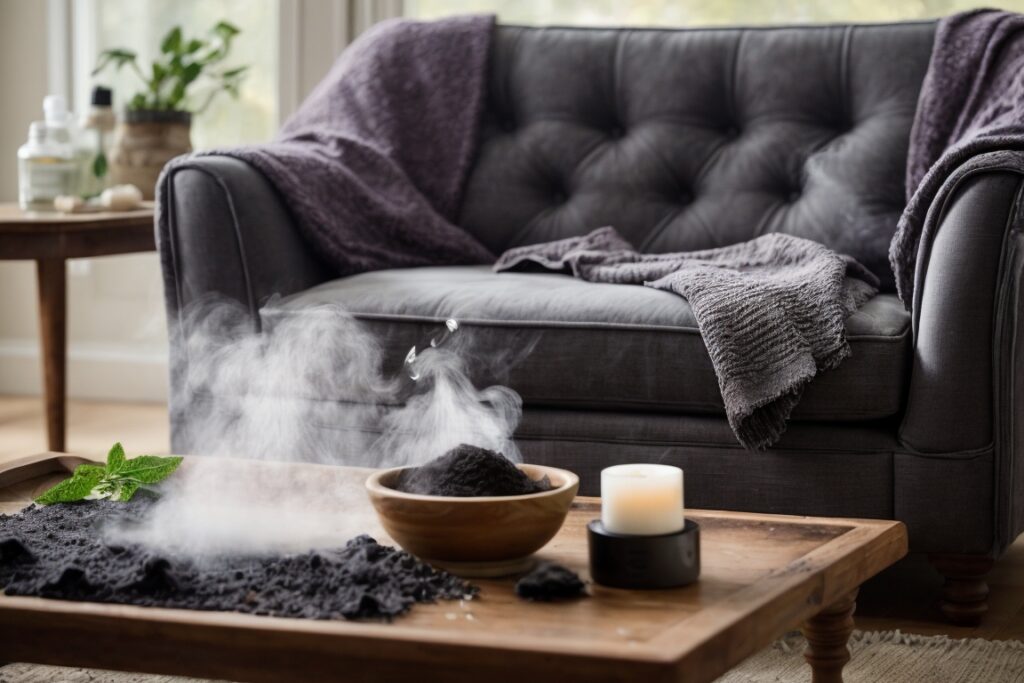
General Odor Removal:
- Baking soda: Sprinkle baking soda generously over the upholstery and let it sit for several hours, preferably overnight. Vacuum up the baking soda thoroughly. Baking soda absorbs and neutralizes odors, leaving your armchair smelling fresh and clean.
- Activated charcoal: Place bowls of activated charcoal around the armchair. This natural odor absorbent will gradually remove unwanted smells.
- Essential oils: Add a few drops of your favorite essential oil, such as lavender or citrus, to a spray bottle filled with water. Spray the solution lightly on the upholstery and air-dry. Essential oils can help mask and neutralize unpleasant odors while adding a pleasant fragrance.
Pet Odor Removal:
- White vinegar solution: In a spray bottle, combine equal parts water and white vinegar. After applying the solution, give the afflicted region fifteen minutes to sit. Blot the mixture with a fresh cloth. White vinegar neutralizes pet urine odors effectively.
- Enzymatic cleaner: For stubborn pet stains and odors, use an enzymatic cleaner specially formulated for this purpose. Follow the manufacturer’s instructions for application. Enzymatic cleaners break down the proteins in pet urine, eliminating the odor at its source.
Mold and Mildew Removal:
- Hydrogen peroxide solution: In a spray bottle, combine one part of hydrogen peroxide with two parts of water. Spray the solution on the mold or mildew spots and let it sit for 30 minutes. After using a brush to scrub the area, rinse it with clean water. Dry the area thoroughly. Hydrogen peroxide kills mold and mildew spores and prevents them from returning.
Odor Removal Techniques by Odor Source
| Odor Source | Odor Removal Technique |
|---|---|
| General | Baking soda, activated charcoal, essential oils |
| Pet | White vinegar solution, enzymatic cleaner |
| Mold/Mildew | Hydrogen peroxide solution |
Additional Tips:
- Regularly air out your armchair by opening windows and doors to promote ventilation.
- Avoid placing your armchair in damp or humid environments.
- Clean up spills immediately to prevent them from setting and causing odors.
- Use a pet-safe odor eliminator if you have pets.
By implementing these odor removal techniques and following the additional tips, you can effectively eliminate unpleasant smells from your armchair and ensure it remains a fresh and inviting place to relax.
Remember, maintaining your armchair’s aroma is a crucial part of proper care and enhances your overall comfort and enjoyment of this cherished piece of furniture.
Storing Your Armchair Properly
When not in use for extended periods, proper storage is essential to protect your armchair and ensure its longevity. Here are some key steps for storing your armchair safely:
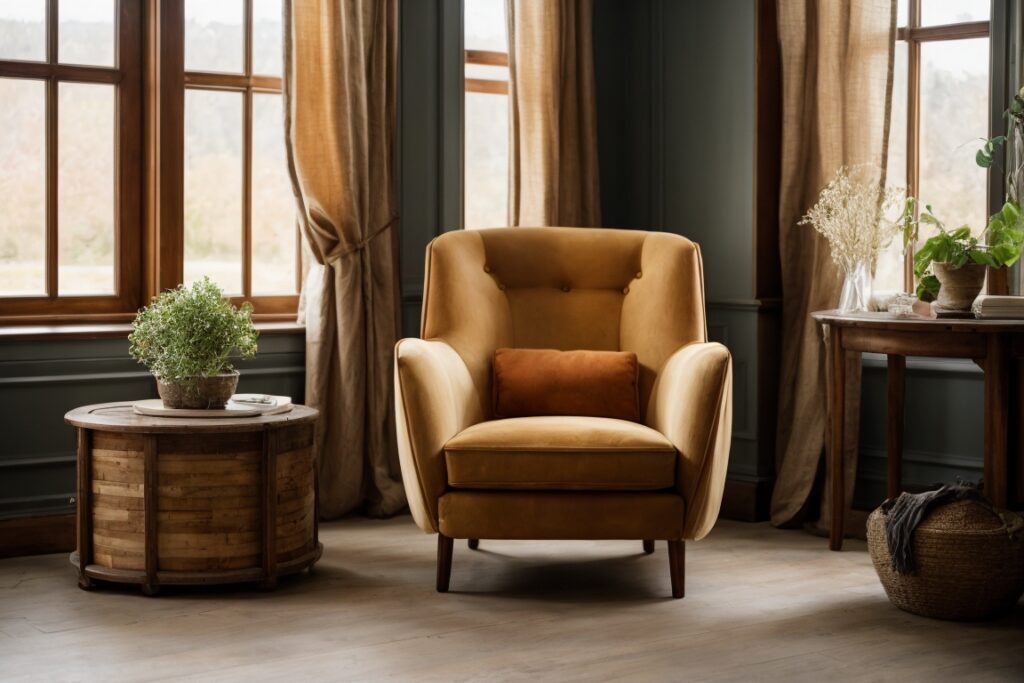
Preparation:
- Clean your armchair thoroughly: Remove all dust, dirt, and stains before storing. This prevents the accumulation of grime and reduces the risk of mold and mildew growth.
- Treat leather: For leather armchairs, apply a leather conditioner to nourish and protect the material during storage.
- Remove cushions and loose covers: Store cushions separately in a cool, dry place. This keeps them from being squishy or distorted.
- Wrap your armchair: Cover your armchair with a breathable fabric sheet or dust cover. This protects the upholstery from dust, sunlight, and pests. Plastic coverings should not be used since they can retain moisture and encourage the formation of mold.
Storage Location:
- Choose a cool, dry place: Avoid storing your armchair in hot, humid areas, attics, or basements. These environments can damage the upholstery and promote the growth of mold and mildew.
- Protect from sunlight: Direct sunlight can cause fading and cracking, especially for leather armchairs. Store your armchair in a shaded area or use window coverings to block sunlight.
- Elevate your armchair: If possible, raise your armchair off the ground using furniture pads or pallets. This prevents moisture from damaging the legs and bottom frame.
- Avoid stacking objects: Do not stack boxes or other objects on top of your stored armchair, as it can cause damage to the frame and upholstery.
Additional Tips:
- Vacuum and air out your armchair regularly: Even when stored, occasionally vacuuming and airing out your armchair can prevent dust buildup and promote freshness.
- Check for damage: Inspect your armchair periodically for any signs of damage, such as cracks, tears, or mold growth. Take quick action to resolve any problems to stop things from getting worse.
- Rotate cushions: If storing cushions separately, rotate them regularly to ensure even wear and tear.
Storage Tips for Your Armchair
| Task | Description | Benefits |
|---|---|---|
| Clean and treat | Eliminates dirt, protects leather | Prevents damage and prolongs lifespan |
| Remove cushions and covers | Allows for separate storage and cleaning | Maintains shape and prevents mold |
| Wrap with breathable fabric | Protects from dust, sunlight, and pests | Minimizes wear and tear |
| Store in cool, dry place | Prevents damage from heat, humidity, and sunlight | Ensures optimal preservation |
| Elevate off the ground | Prevents moisture damage and promotes air circulation | Protects the frame and upholstery |
| Avoid stacking objects | Prevents damage from weight and pressure | Maintains structural integrity |
| Vacuum and air out regularly | Reduces dust accumulation and promotes freshness | Creates a healthier and more enjoyable environment |
| Check for damage | Identifies and addresses issues early | Minimizes repair costs and extends lifespan |
| Rotate cushions | Ensures even wear and tear | Maintains comfort and support |
By following these storage guidelines, you can ensure your beloved armchair remains in pristine condition, even when not in use. Remember, proper storage is an investment that pays off in the long run, allowing you to enjoy your armchair for many years to come.
Conclusion: A Rewarding Investment
Investing time and energy into caring for your armchair is a rewarding journey that yields countless benefits. By implementing the comprehensive guide outlined above, you can ensure your armchair remains a cherished piece of furniture for years to come.
Here’s a brief rundown of the important takeaways:
- Regular cleaning: Dust, vacuum, and spot clean regularly based on upholstery material.
- Protective measures: Minimize sunlight exposure, use coasters, avoid harsh chemicals, and distribute weight evenly.
- Maintenance checks: Tighten loose screws, inspect for structural damage, and lubricate moving parts.
- DIY cleaning solutions: Utilize baking soda, white vinegar, and essential oils for natural cleaning.
- Odor removal techniques: Employ baking soda, activated charcoal, and essential oils for general odors, and specific solutions for pet and mold/mildew issues.
- Proper storage: Clean, treat, wrap, and store in a cool, dry place elevated off the ground.
By embracing these principles and adapting them to your specific armchair, you can extend its lifespan, enhance its comfort, and preserve its beauty. Remember, your armchair is more than just a piece of furniture; it’s a haven for relaxation, a witness to cherished moments, and a testament to your commitment to creating a comfortable and inviting home.







